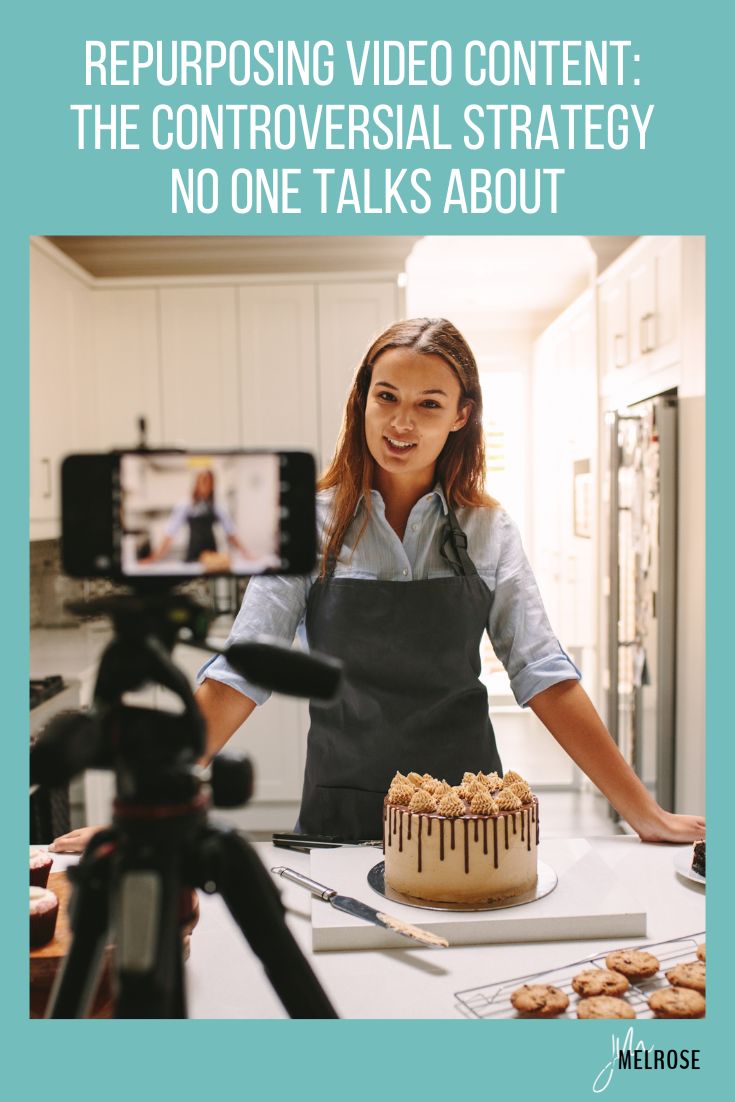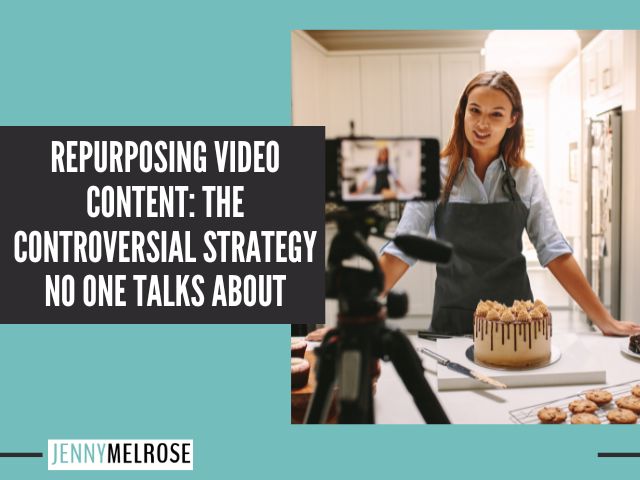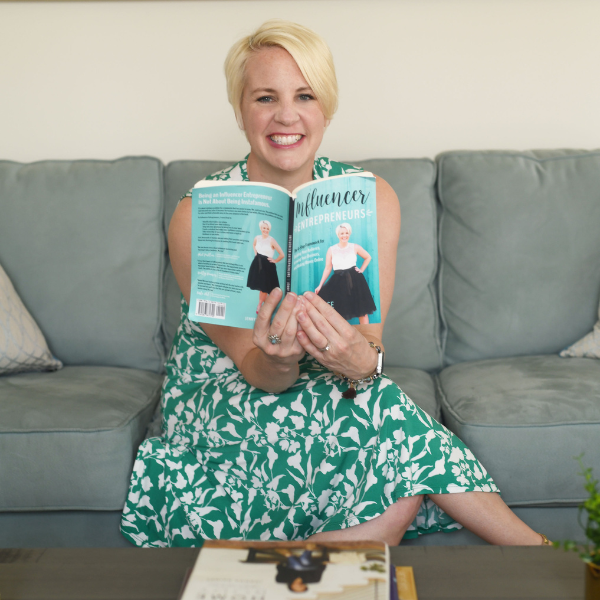Discover why creating new videos might be wasting your time. Learn how repurposing video content can maximize reach and boost your roi.
IE 426: Repurposing Video Content: The Controversial Strategy No One Talks About

The Problem with Constantly Creating New Videos
Burnout
If you’re constantly in front of video and you’re constantly having to edit and go through it and make sure that everything is perfect and done the right way.
It is very likely that it’s going to be hard for you to keep up with, unless, of course, you have a team that is helping you.
Burnout is definitely one of the reasons why you want to start thinking about how you can repurpose your video content.
Under Utilization of Other Platforms
You are probably underutilizing other platforms like your blog or your website.
Many of my video content creators are creating video for YouTube or for Instagram, wherever it is that you’re creating that video content for.
You’re just doing it for those platforms and you’re doing it on rented property.
It’s important that you are utilizing other platforms and putting it in mediums that maybe, if they’re not going to YouTube for a video, maybe they’d rather read it and thinking about those different types of audiences.
Resource Constraints
You are also going to end up with resource constraints, right?
It’s going to be a matter of how much time a video will take you to shoot and then to edit.
How many videos can you possibly be able to put out, whether you are trying to add videos to existing content or you’re trying to start with a new video and continually try to pump out new content.
These are some of the problems that we definitely are seeing with creating new videos constantly.
The Case for Repurposing Video Content
Maximizing ROI
it’s important that we start talking about maximizing the ROI or your return on investment.
Maximizing the ROI we want to be able to be putting our time into something that can be utilized on other platforms and be able to reach other audiences because of it.
We really want to be able to put our time into one thing and then repurpose it, not reinvent the wheel.
Reaching Diverse Audiences
We’re going to have the opportunity to reach diverse audiences because, as we have said in the past, not everyone goes to YouTube or to Instagram to find out about that type of content. You’re going to have other people that could very well have the problem that you were answering and you have the solution for, but they’re going to go to Google and look to read an article, or they’re going to potentially go to a podcast and listen for the audio.
You have people that have the problems that you have, that need the solutions that you’re providing, but you’re only reaching them through one medium and, potentially, on one platform.
It’s important that you’re diversifying this so that you can reach new audiences.
Boosting Engagement Across Platforms
It also is going to boost engagement across platforms.
It’s ideal that we are complementing what we are already creating on other platforms so that people begin to really know, like and trust us on other platforms,
Ultimately, by creating content we are trying to get them onto our email list to then buy a product or service from us.
By creating and repurposing video content onto other platforms, it gives us that opportunity to increase the know like trust factor.
If they continue to see you everywhere they go whether it is YouTube, a podcast, a blog post, Instagram, a reel or in a carousel even that you’ve broken this down, that is going to continue to be in front of them and they’re going to begin to feel like they know like and trust you even more than they have in the past.
Building on Property that You Own
The most important reason, is that you want to make sure that you are building on property that you actually own.
Youtube is not something that you own. Youtube could change the algorithm, it could shut down.
If you are monetizing via ads, it is a great way to be able to monetize using the video player in either your journey or in Mediavine or in AdThrive.
Really start to think about the opportunity that you can have to make sure that you are repurposing and building on your own platform, your own property, and that in doing so, you’re also going to grow your email list, which will then be able to give you the opportunity to sell your products and services to your people.
Strategies for Repurposing Video Content
Keyword Research
The first strategy is going to make sure that we are still doing the keyword research.
If you are putting your content on YouTube, you know that there is a YouTube keyword that you need to be making sure they’re in your video.
If you were then going to turn it into a blog post, you want to check to see what the keyword volume is going to be and if it coordinates across platforms.
If we’re going to be pinning we need to take a look at Pinterest.
It may not be the exact keywords, it’s important that we understand that and look to diversify it for each of the platforms that we are looking to repurpose the content onto.
Break it Down
For each of the platforms that we are looking to repurpose the content onto, we also then want to be able to take the video content and potentially be able to break it down into smaller, bite-sized pieces.
Can you turn it into a reel?
Can you turn it into a short?
Can you use it as an ad for Facebook?
How can you go about using that content that you are already doing and break it down?
There are software out there that are AI based, like vidyo.ai, where you can actually put it into their platform, and they’re going to break it into all different pieces of content.
Again, it’s important that you have done that keyword research prior to that, so that you can make sure that you are using the platform to the best of your ability.
You want to make sure that you can make sure that you are using the platform to the best of your ability.
Optimize for Each Platform
You want to make sure that, when you are creating this content that you optimize for each platform, making sure not only the keyword, but that the video structure is set up the way that’s going to work for the platform.
A 12-minute form video on YouTube is very different than an Instagram reel or a TikTok, so it’s important that, when you are breaking down that video content, that you are optimizing for each platform.
Real World Examples
What I really want to be able to do is to give you a real world example.
In a previous episode about changing careers in midlife, I spoke with Hope Ware about how she turned and decided that she was done with what she was doing as far as her job and she wanted to start her own business.
She started on YouTube and was very, very successful there, and still is very successful today.
She came to me and found me because she heard me talking about don’t just build on a rented property, which is what YouTube can end up being.
So she started turning those into blog posts so that she could actually have the keyword volume coming from Google and have that content that would have a longer lifespan as compared to, potentially, possibly, a YouTube video.
She then started to use that same YouTube content on Instagram Reels.
Now, one of the great things that she was able to do is one, she ended up growing, continuing to grow, her email list.
She was able to sell more products and services.
She was also able to get bigger brand deals because the brands understood the value that she was providing by creating a long lifespan for a blog post, as well as her amazing email list that had a high click rate and open rate.
Action Steps:
- If you liked this episode of Influencer Entrepreneurs, please subscribe and leave a fabulous review!
- Join the conversation and leaving a comment below with any questions.
- Be sure to become an Influencer Entrepreneurs+ member to listen in on exclusive content.



As a business owner to be I really appreciate this article. It is very simple yet extremely helpful in regards to extending the content of videos being created. Now when I begin recording, I will have these suggestion in the forefront while creating. Thank you for this and look forward to more from you!